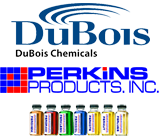Coolant Types
We are Here to Help
If you have questions, please don’t hesitate to ask. Our website should serve to answer many common questions. If you would like further information on pricing, shipping or what coolant or lubricant would be best for your application, please fill out the information on the contact us page.
The Basics of Metalworking Fluids
Industrial operations requiring the grinding, cutting, or boring of metal parts also require the use of metalworking fluids to meet productivity and quality requirements. Metalworking fluids (MWFs) have two primary functions: to cool and to lubricate.
All metal removal processes generate a tremendous amount of heat. This heat must be reduced in order to achieve productivity and part quality. The cooling effect provided by a metalworking fluid gives the cutting tool or grinding wheel a longer life and helps to prevent burning and smoking. At the point where the tool is in contact with the part, lubrication is necessary to reduce friction between the tool and the part, resulting in improved tool life and better finishes on the metal cut.
Metalworking fluids also provide corrosion protection for the newly machined part and machine tool. Water-miscible metalworking fluid formulations (those fluids that are meant to be diluted with water) include components that slow or prevent such corrosion. MWFs also help remove chips or swarf (an accumulation of fine metal and abrasive particles) from the cutting zone.
What Are the Different Types of Metalworking Fluids?
There are four major classes of metal-working fluids widely available:
- Straight Oil,
- Soluable Oil,
- Semi-Synthetic,
- and Senthetic.
Many metalworking fluids, except the straight oils, are mixed with water for use. Each has additives such as surfactants, biocides, extreme pressure agents, anti-oxidants, and corrosion inhibitors to improve performance and increase fluid life (refer to Appendix 2 for a listing of typical additives).
Straight Oil:
This type of metalworking fluid is made up mostly of mineral (petroleum) or vegetable oils. Petroleum oils used for these fluids today tend to be “severely solvent refined” or “severely hydrotreated” (refining processes which reduce cancer-causing substances called polynuclear aromatic hydrocarbons [PAHs] present in crude oil). Other oils of animal, marine or synthetic origin can also be used singly or in combination with straight oils to increase the wetting action and lubricity.
Straight oils can be recognized by an oily appearance and viscous feel. These materials may contain chlorinated and sulfur additives. This product is not diluted with water before use.
Straight-oil metalworking fluids are generally used for processes that require lubrication rather than cooling. They perform best when used at slow cut speeds, high metal-to-metal contact or with older machines made specifically for use with straight oils. Straight-oil MWF systems may require fire protection.
Soluble Oil:
Soluble oil is also called emulsifiable oil. It is made up of from 30 to 85 percent of severely refined lubricant base oil and emulsifiers to help disperse the oil in water. The fluid concentrate usually includes other additives to improve performance and lengthen the life of the fluid. Soluble oil products are supplied as concentrates that are diluted with water to obtain the working fluid. They may have colorants added.
Soluble oils in general provide good lubrication and are better at cooling than straight oils. Drawbacks in using soluble oils, however, are that they sometimes have poor corrosion control, are sometimes “dirty” (i.e., machine tool surfaces and nearby areas become covered with oil or difficult-to-remove product residues), may smoke (they may not cool as well as semi-synthetics and synthetics), and may have poor mix stability or short sump life.
Semi-synthetic:
This type of metalworking fluid contains a lower amount of severely refined base oil, for example, 5-30 percent in the concentrate. Semi-synthetics offer good lubrication, good heat reduction, good rust control, and have longer sump life and are cleaner than soluble oils. They are comprised of many of the same ingredients as soluble oils and contain a more complex emulsifier package.
Synthetic:
These metalworking fluid formulations do not contain any petroleum oil. They contain detergent-like components to help “wet” the part and other additives to improve performance. Like the other classes of water-miscible fluids, synthetics are designed to be diluted with water. Among the four types of fluids, synthetic metalworking fluids generally are the cleanest, offer the best heat reduction, have excellent rust control, and offer longer sump life. In addition, this type of metalworking fluid is transparent (allowing the operator to see the work) and are largely unaffected by hard water. Source: OSHA
https://www.osha.gov/SLTC/metalworkingfluids/metalworkingfluids_manual.html
